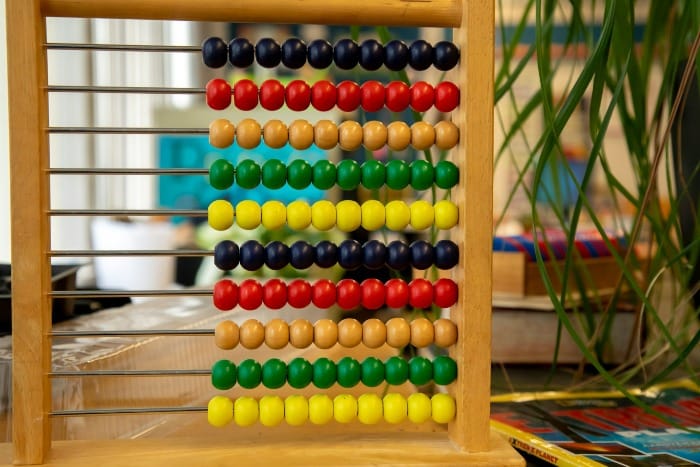How To Count In Tagalog
Locals almost stopped saying numbers in straight Tagalog but if you're a beginner in Tagalog it will help increase your vocabulary if you know how to count in Tagalog. You'll also get the hang of our phrases.

Welcome to our General Tagalog Practice. In the previous chapter, my topic was about Telling Time In Tagalog. Was it all new to you? Did I help you recall what you already know? If you need to accelerate your level in Tagalog, my 1-on-1 Premium Classes is for you. Feel free to reply using this link.
To some people, numbers are boring but to me it's the opposite. Math is my first love but it's ironic that I'm relatively slow in "mentally processing" the basic calculations we call MDAS (multiply, divide, add, subtract). 🤭 I'm okay with Math operations for as long as I'm only multiplying by 2 or dividing by 2 or adding/subtracting single digits. Otherwise I'll need a pen and paper. ☺️ With that being said, if you're one of those who see numbers as dreadful, don't worry because I've your back.
Essential Questions
- How to count in Tagalog?
- How to count in intervals of ten?
- How to count in intervals of 100?
- How to count in intervals of 1,000?
Delimitation
This tutorial does not cover Basic Tagalog Grammar. This won't answer how or why number words are connected with 'na' or 'at'. It doesn't teach you why, on some occasions, prefix 'labim' or 'labin' is used instead of 'labing'. Also, it doesn't discuss the difference between 'daán' and 'raán'.
Saying The Numbers In Tagalog
Recall that I've shown you a table that'll help you count from 1 to 12, in Tagalog. I'd like to connect it here by giving you a table that just starts at number 13 but ends at 24. Here's the table:
| Mga Bilang | Numbers |
|---|---|
| labíntatló | 13 |
| labíng-apat | 14 |
| labínlimá | 15 |
| labíng-anim | 16 |
| labímpitó | 17 |
| labíngwaló | 18 |
| labínsiyám | 19 |
| dalawampû | 20 |
| dalawampû at isá | 21 |
| dalawampû at dalawá | 22 |
| dalawampû at tatló | 23 |
| dalawampû at apat | 24 |
I know these are mouthful to say but I challenge you to memorize these numbers in Tagalog. Begin with isá, dalawá, tatló... up to dalawampû at apat. Do it again. And again. Count in Tagalog anywhere. While you're waiting at the airport, or at the dentist's clinic, when you're anxious, or while you're trying to appease your mind. 😉
Ask anyone in the Philippines, ask what does it mean when they hear their Nanay yelling "isá!.. dalawá!.. tatló!.."
Prefix "labíng"
Labíng came from the phrase “labis ng ___ sa sampû” where blank can be any fundamental number from 1 to 9. Here are some examples:
- “Labis ng isa sa sampû” means 1 more than 10 or one plus 10.
- “Labis ng dalawá sa sampû” means 2 more than 10 or 2 plus 10.
Labíng also means “____ at sakâ sampû“ where blank can also be any fundamental number from 1 to 9, such as these:
- “Tatló at sakâ sampû” means 3 plus 10.
- “Apat at sakâ sampû” means 4 plus 10.
Now that we know that "labíng" is a prefix but have you ever wonder why this prefix becomes inconsistent such that instead of 'labíng' we say "labín" while other times it's "labím"? You'll find the answer to that soon because it's a separate series of lessons under Tagalog Phonology.
Counting In A Certain Intervals
It will also help to practice saying Tagalog numbers by counting in a certain intervals. Try it by intervals of 10:
| Mga Bilang | Numbers |
|---|---|
| sampû | 10 |
| dalawampû | 20 |
| tatlumpû | 30 |
| apatnapû | 40 |
| limampû | 50 |
| animnapû | 60 |
| pitumpû | 70 |
| walumpû | 80 |
| siyámnapû | 90 |
| isáng daán | 100 |
Notice that the series of tens in Tagalog sounds like 2 words: the word digit followed by the word 'pù'. Pù is the shortened word for 'puô' which means "tens" or group of tens. The word 'dalawampû', for example comes from the phrase 'dalawáng puô' which also means 'dalawá na puô'.
More examples:
tatlumpû ⬅️ tatlóng puô ⬅️ tatló na puô
apatnapû ⬅️ apat na puô
'Daán' means hundred and here's how to count in intervals of 100: isáng daán, dalawáng daán, tatlóng daán, apat na raán, limáng daán, anim na raán, pitóng daán, walóng daán, siyam na raán. Counting this way means we have this pattern:
Notice the numbers which end in a vowel letter: they contain a suffix 'ng' as shown in the following examples:
limáng daán ⬅️ limá na daán
pitóng daàn ⬅️ pitó na daán
while the words 'apat', 'anim' & 'siyám' end in a consonant letter but they're followed by 'raán' instead of 'daán'. This peculiarity is also to be explained under the Tagalog Phonology section.
Likewise, the guidelines on using the particle 'na' and the suffix 'ng' is yet to be published but under another series called Basic Tagalog Grammar. Allow me to save your e-mail address and by doing so you've read our Privacy Policy.
Going back to our today's practice, let's count in intervals of 1,000 this time: isáng libo, dalawáng libo, tatlóng libo, apat na libo, limáng libo, anim na libo, pitóng libo, walóng libo, siyam na libo. See that the pattern has been:
or sometimes it is:
Large Numbers In Tagalog
I've mentioned in the past that locals almost stopped saying numbers in their mother tongue, which to me is horrible. 😭 Is there anyone with me who desire to reverse the trend? Such that while Tagalog is just your second language, will you make it a habit to say the numbers, small or large, in Tagalog? Such that locals slowly follow the trail that you clear up for them? They're good at admiring and following the foreigners anyway.
To avoid having too much to learn in one article, I chose to cut it short this time but I shall be back at you with the continuing part which will focus on How to Express Large Numbers In Tagalog.
For now, you may continue harnessing your skill by reviewing this current online tutorial or see the past lessons that are already published. I'm also leaving you some exercises that you can work on your own and should you need my feedback in writing: there's a button below to access the form; or you may join our Free Saturday Coaching Calls via Jitsi Meet, 11:00 AM US & Canada East Coast time.
Tagalog Short Quiz
- Fill in the blank: (Punuín ang patláng:)
apat, limá, _______, pitó
- Fill in the blank: (Punuín ang patláng:)
siyám, sampû, ________, labíndalawá
- Fill in the blank: (Punuín ang patláng:)
labínlimá, labíng-anim, __________, labingwaló
- Fill in the blank: (Punuín ang patláng:)
tatlumpû, _________, limampû, animnapû
- Fill in the blank: (Punuín ang patláng:)
isáng daán, _________, tatlóng daán, apat na raán
- Fill in the blank: (Punuín ang patláng:)
anim na libo, _________, walóng libo, siyám na libo
- Count in reverse order: (Bumilang nang pabaligtád:)
10, 9, 8, 7, 6, 5, 4, 3, 2, 1, 0
- Count in intervals of 5: (Bumilang nang may pagitang limá:)
5, 10, 15, 20, 25, 30, 35, 40, 45, 50, 55, 60, 65, 70, 75, 80, 85, 90, 95, 100
✅ Care to submit your answers to this quiz so you'll get a feedback from me? Simply click this link and fill up the form.
Conclusion
📌
In this tutorial, you've learned how to count in Tagalog.
-
Along with the basic series from 'isa' up to 'siyám', you've learned that prefix 'labing' is used with numbers greater than 10 but less than 20.
-
You can count in intervals of 10 by using the suffix 'pû'.
-
3-digit numbers are indicated by the word 'daán'.
-
4-digit numbers are indicated by the word 'libo'.
Enjoy your Tagalog journey.
Sumasaiyó,
Albine Bodo
⬅️ Previous Lesson
➡️ Next Tutorial



Comments ()